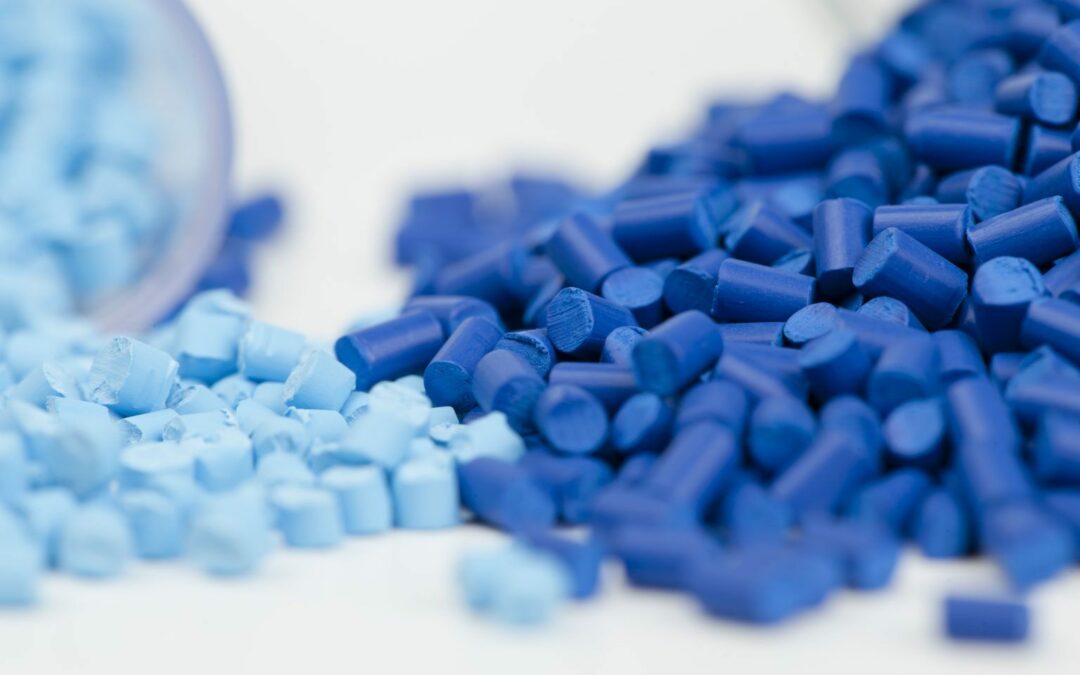From fresh steak to new phones, the goods we buy are usually wrapped in one thing: plastic. And plastic dominates how we pack and store products for good reason – it is lightweight, cost-efficient, and durable. Plastic helps us transport and receive goods in perfect condition, thus reducing food waste and preventing damaged goods from heading to landfills.1
However, what we do with plastics after a package is opened is a hurdle to overcome on our way toward sustainability. Consumers, governments, environmental scientists, and product manufacturers have each put pressure on the polymers industry to reduce plastic waste.
Reusing Post-Consumer Resin (PCR) is a popular approach to keep plastic waste out of our environment.2 Instead of using brand-new virgin resin, plastic producers work with resins made from consumers’ used packaging to produce new plastic containers, films, and other products. Sourcing from PCR gives used plastic an additional life, and plastics may be re-used multiple times as recycling technology advances.
Challenges in the Shift to PCR
New legislation is emerging around the world to ensure that all polymer producers contribute to sustainability progress. Countries with substantial plastics industries are adopting gradual recycling enforcement with the required percentage of PCR increasing over the next decade. By 2030, the percentage of PCR in new plastic products must be 30% in the EU, 50% in California USA, 50% in Canada, and 30% in the UK.
Clearly, using PCR is moving from a suggestion to a requirement for plastic producers. While the shift is necessary, it is not always an easy one. PCR feedstock poses numerous challenges since it can vary greatly from batch-to-batch or even within a batch, and PCR may be contaminated from prior use.3 How can manufacturers evaluate the properties of their PCR batch and successfully create consistent, safe products? Polymer producers are turning to materials science to characterize their PCR batches and subsequently adjust their formulations for optimal results.
Characterizing Post-Consumer Resin
Raw post-consumer resins are commonly characterized by DSC, TGA, and Rheology before they are formulated into usable resins and ultimately into polymer products. Techniques like Differential scanning calorimetry (DSC) measure temperatures and heat flows associated with thermal transitions in a material. This data is useful for evaluating a resin’s thermal properties such as melting point and crystallization rates, as well as identifying the presence of other polymers contaminants present in PCR. Thermogravimetric analysis (TGA) measures a material’s mass over time during temperature change. For polymer testing, TGA can be used to measure the thermal degradation of their resins. Rheology is the study of the flow of matter, which correlates to a polymer resin’s processability. When manufacturing polymer products using PCR, producers use rheology to test the sample’s melt and extensional viscosity as well as viscoelastic properties. When working with recycled resins, the information from these techniques can be used to add the appropriate amount of additives prior to processing.
After resins are formulated with additives, the masterbatches with PCR are tested for quality and consistency. DSC can now measure the resin’s thermal stability, which may vary depending on the blend of resins and additives used. Dynamic Mechanical Analysis (DMA) measures the mechanical properties of materials as a function of time, temperature, and frequency. Polymer scientists use DMA to measure their product’s modulus and glass transitions. These measurements help scientists evaluate product strength, blend compatibility, and investigate failed batches.
Taken together, polymers producers are applying these material science techniques to develop a better understanding of their polymer formulations, especially as they start ramp up the PCR content to comply with the targets and deadlines set by local authorities.
By: Bharath Rajaram | Morgan Ulrich
THE ORIGINAL ARTICLE CAN BE FOUND HERE

